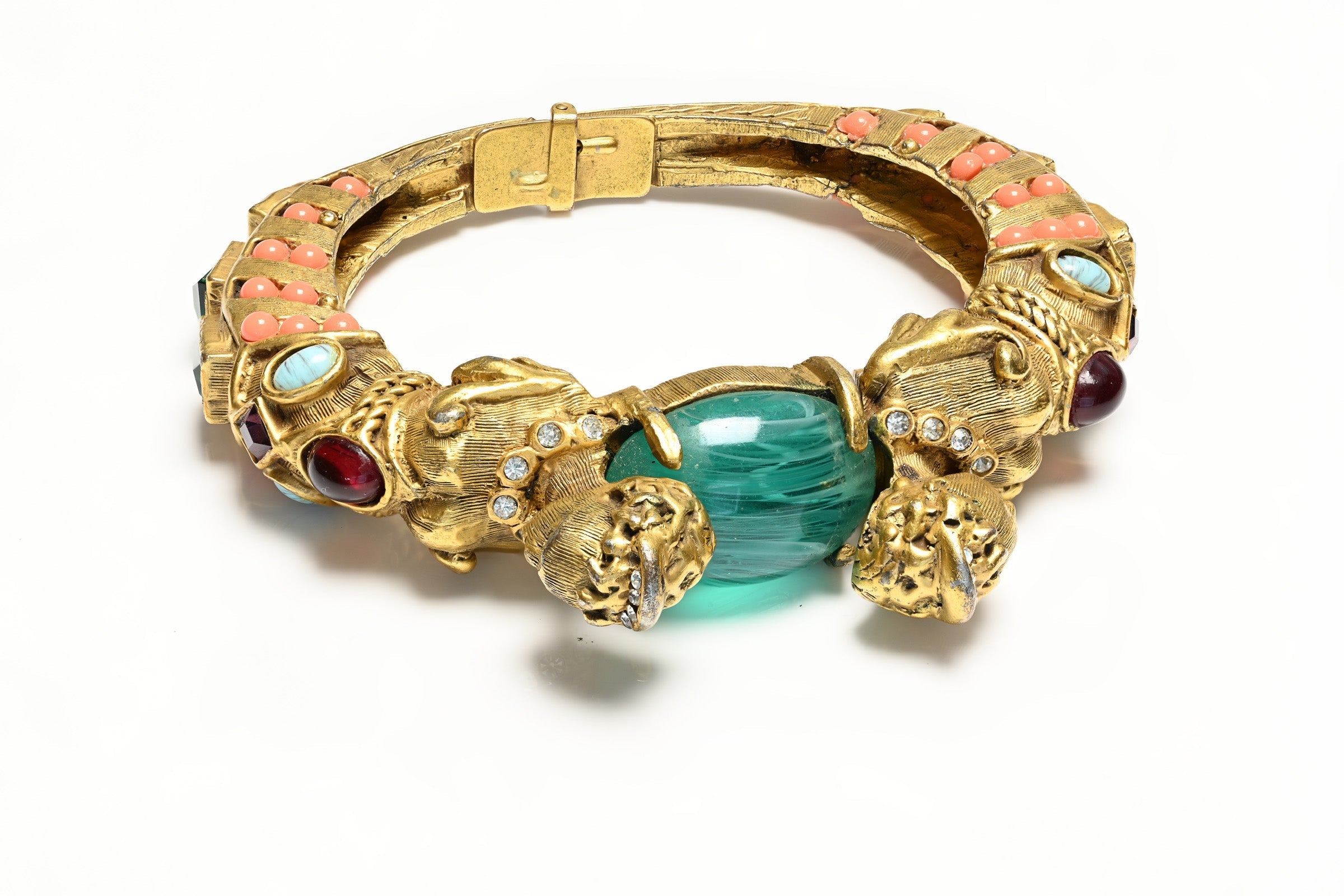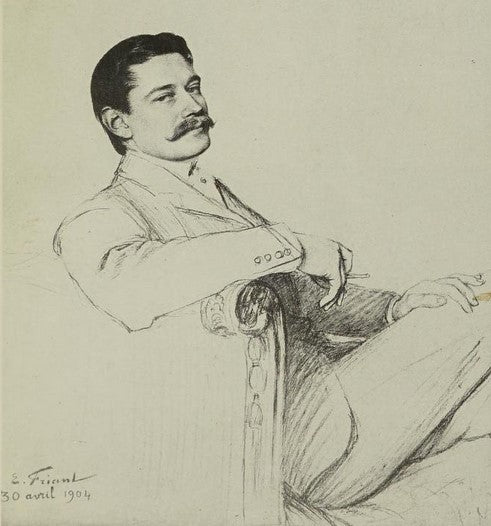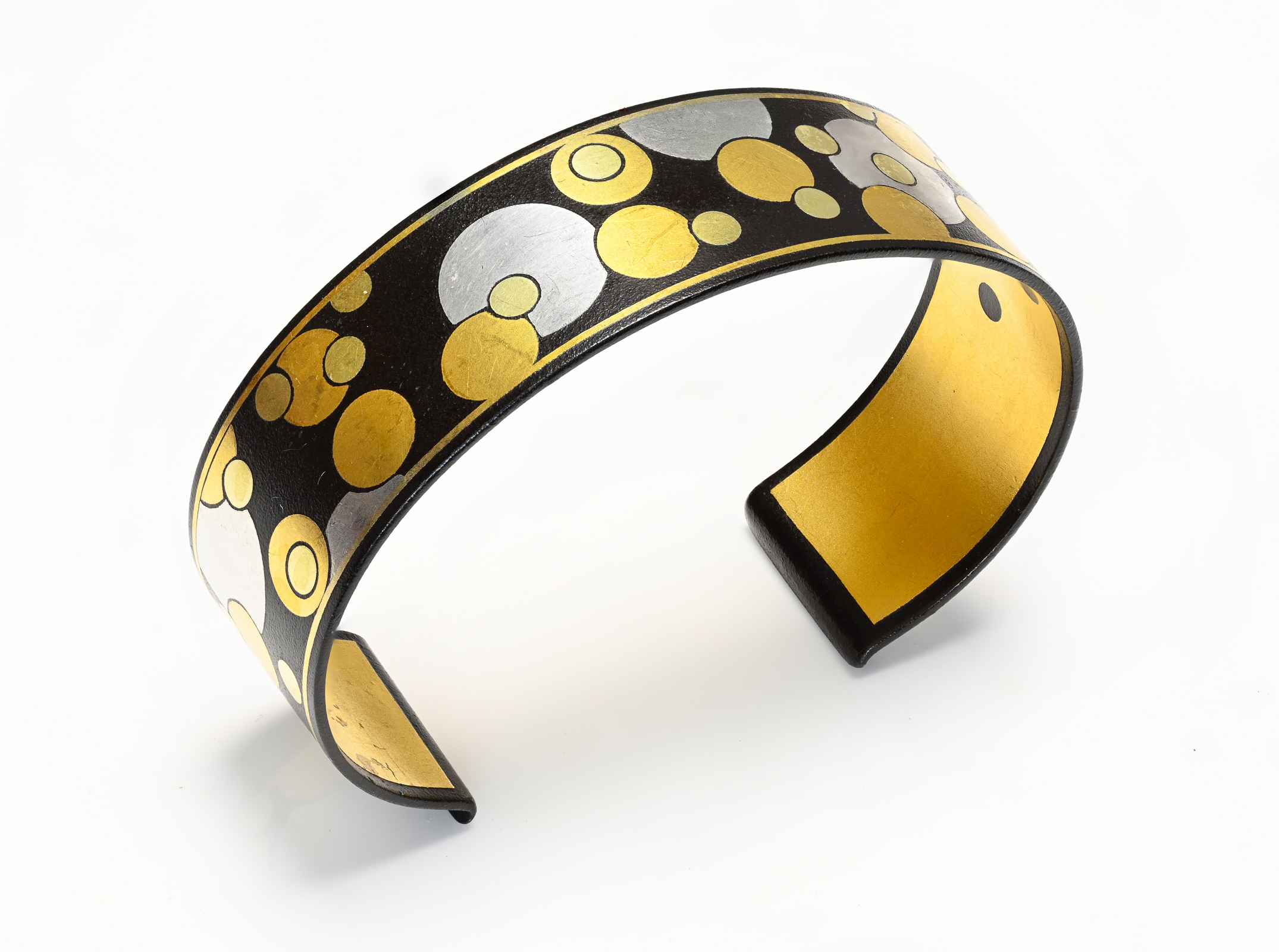
The Art and Symbolism of Renaissance Jewelry
Discover the art and symbolism behind Renaissance jewelry. From opulent gold designs to gemstone-encrusted pieces, explore how jewelry reflected wealth, power, and devotion.
The Renaissance was the historical period between the mid-1400s and the late 1500s. It was characterized by a strong cultural and artistic revival, based on the centrality of man and his ability to assert himself in the world through his talents. It was also a time of great economic, political, and social change, notably marked by the discovery of the New World in 1492.
Jewelry during the Renaissance period was a symbol of the art and culture of the time, reflecting major social, economic, and artistic changes. In Italy, where the Renaissance reached its height, jewelry design was strongly influenced by classical motifs and craftsmanship.
Classical Influence in Renaissance Jewelry
The Italian Renaissance was marked by a rediscovery of classical art and culture, which profoundly influenced jewelry design. Inspired by Greco-Roman antiquity, jewelry motifs included mythological scenes, allegorical figures, and floral designs, all crafted with meticulous attention to detail.
The Materials Used
During the Renaissance, jewelry was crafted from precious metals like gold and silver, often embellished with gemstones, pearls, and colorful enamels. Diamonds and rubies were highly prized, while pearls symbolized purity and wealth.
Italy, being a major trading center during the Renaissance, absorbed influences from other cultures. Trade relations with the East and other parts of Europe introduced new styles and materials to Italy. For example, sapphires from Sri Lanka and emeralds from Colombia became increasingly popular in luxury jewelry.
Voyages of exploration and geographical discoveries in the 1400s and 1500s brought large quantities of precious metals and gemstones to Europe. After the discovery of America in 1492, Christopher Columbus continued his voyages and, a few years later, found large reserves of gold in Venezuela. In turn, Portuguese explorer Vasco da Gama reached India and discovered its diamond mines, while Spanish expeditions led by Hernán Cortés and Francisco Pizarro conquered and destroyed the Aztec and Inca empires, both rich in precious resources.
Functions and Symbolism of Jewelry
Jewels during the Renaissance were not only luxurious ornaments but also powerful symbols of social status, power, and influence. Particularly in Italy, aristocratic families and the papacy used jewelry to demonstrate their wealth and artistic patronage. Jewelry also carried religious significance, such as decorated crosses, rosaries, or medallions.
Jewelry in this period was both aesthetically and symbolically significant, functioning as emblems of social status, faith, political power, and personal emotions. The Renaissance, which spanned from the 14th to the 17th centuries, was a period of rediscovery of classical art, culture, and philosophy, and this was reflected in the art of jewelry.
The Functions of Jewelry During the Renaissance:
Emblems of social status and power: Jewelry was a symbol of wealth and social position, especially among the aristocracy and royalty. Wearing opulent jewelry displayed rank and influence and was also used to impress through extravagance. For example, pearl necklaces were a sign of elegance and refinement, favored by queens and nobility.
Political tools: Jewelry was often given as diplomatic gifts to cement political or matrimonial alliances. These gifts typically bore the insignia of noble families or other symbols of trust and alliance.
Religious symbols: Religion played a central role during the Renaissance, and jewelry was used to express devotion to the Catholic faith. Gold crosses or religious engravings on precious stones were common as symbols of protection and faith. The crucifix medallion, for instance, combined decorative art with personal faith.
Protection and magic: Amulets and protective jewelry were popular, often believed to shield the wearer from harm or bring good luck. These pieces frequently featured precious stones, such as rubies or sapphires, thought to have magical properties. Cameo jewelry, for instance, was worn to bring good fortune and protect against evil.
Jewelry of love and affection: Jewelry was often given as a token of love or as a symbol of marital union. The engagement ring became a lasting tradition during this period, with gemstones symbolizing love and fidelity. One of the most famous examples is Marie of Burgundy’s diamond engagement ring, which helped popularize the tradition of using diamonds for engagement rings.
Jewelry Symbolism
Religious symbolism: Jewelry featuring crosses, images of the Virgin Mary, or saints often reflected devotion to God. These pieces were not just decorative items but symbols of piety.
Heraldic symbols: In aristocratic circles, jewelry often bore family crests, representing loyalty and membership in a noble family.
Mythological and classical elements: Renaissance jewelry frequently included symbols inspired by Greek and Roman mythology, reflecting the period’s fascination with ancient classicism. Popular motifs included depictions of gods and goddesses, such as Cupid, the god of love.
Floral and natural symbols: Nature played an important role in Renaissance art, and this was reflected in jewelry design. Floral motifs like roses, tulips, and laurel leaves symbolized fertility and renewal.
Examples of Renaissance Jewelry
Keyring: Used not only to symbolize engagement or marriage but also as a symbol of access to one’s heart.
Cameo Pendant: Relief engravings of mythological figures or portraits were highly prized and reflected classical artistic influences.
Gemstone Bracelets: Noblemen often wore opulent bracelets on both hands, which symbolized wealth and artistic taste.
Jewelers' Craft
Jewelers in cities like Florence, Venice, and Rome were regarded as true artists. Their workshops were hubs of innovation and creativity, where traditional techniques were perfected and merged with new humanist ideas. Lorenzo Ghiberti and Benvenuto Cellini were two notable craftsmen of the age.
In Florence, the city often considered the cradle of the Renaissance, goldsmiths became as famous and influential as painters and sculptors. Many great artists, including Brunelleschi and Donatello, began their careers in the city’s goldsmith workshops.
Specialized craftsmen emerged, such as the battiloro (who worked gold and silver into thin sheets) and the gilder (the jewelry designer).
The Ponte Vecchio bridge over the Arno River became a symbol of this flourishing art when Ferdinando I de Medici moved all of Florence's goldsmiths’ workshops to the bridge in 1593.
The most famous Florentine goldsmith was Benvenuto Cellini (1500-1571), who was also a sculptor and writer. He worked at the French royal court and later for the powerful Medici family, the Dukes of Florence. His most renowned works include the bronze statue of Perseus with the Head of Medusa, still standing in Florence’s Piazza della Signoria, and the gold Saliera of Francis I of France, considered his masterpiece.
Lorenzo Ghiberti, a renowned sculptor, was also a highly skilled jeweler and goldsmith. His early training in the craft of working with precious metals greatly influenced his artistic style and technique. Apprenticed to his father, Bartoluccio Ghiberti, Lorenzo developed a remarkable finesse and attention to detail, which are evident in his later works.
One of his most famous works is the Gates of Paradise for the Baptistery of Florence, which demonstrates an exceptional level of detail inspired by the techniques of jewelry-making. The way he modeled figures and ornaments reflects an almost miniature-like precision typical of goldsmith craftsmanship.
His bronze bas-reliefs demonstrate a similar skill set to that required for jewelry-making, particularly through his use of layering and perspective to control the thickness of the material, an ability honed through his experience working with gold.
Jewelry-Making Techniques
During the Renaissance, jewelry-making techniques evolved significantly as craftsmen rediscovered classical art and combined it with new technological advancements. These artisans valued fine details, a variety of materials, and the symbolic combination of decorative elements.
Some of the most important techniques used in Renaissance jewelry included:
1. Filigree: Delicate strands of metal (usually gold or silver) were twisted and shaped into intricate, lace-like patterns. The fine threads were arranged in geometric or floral shapes and then soldered together. This technique was highly prized for its fine detail and was used to create pendants, bracelets, and rings.
2. Granulation: An ancient technique rediscovered during the Renaissance, granulation involved applying small grains of metal (typically gold) to the surface of jewelry to create intricate patterns or fine decorative effects. This technique added texture and depth to rings and pendants.
3. Enameling: This popular decorative technique involved applying thin layers of enamel (fused glass) to metal surfaces. The enamel was heated to fuse it to the jewelry. Techniques included:
Cloisonné: Thin metal wires were used to create compartments in which the enamel was placed.
Champlevé: Enamel was applied to incisions cut into the surface of the metal.
Plique-à-jour: Transparent enamel was applied in voids, creating an effect
Enameling allowed jewelers to add vibrant color to their pieces, creating miniature painting effects. It was commonly found in pendants, brooches, and even costume cufflinks.
4. Chasing and Engraving: Chasing involves shaping the surface of the metal with small tools to create detailed reliefs, while engraving is the process of carving designs, text, or images into the jewelry. These techniques allowed for personalized and unique pieces, often featuring mythological, biblical, or heraldic scenes. They were frequently used on lockets and signet rings.
5. Cameo and Intaglio: These are carving techniques used in semi-precious stones or shells. Cameos involve cutting an image in relief, while intaglios are images carved deep into the stone. Both techniques were extremely popular during the Renaissance and were often used for portraits, mythological scenes, or religious images. Jewelers crafted cameos from stones such as onyx, agate, and coral.
6. Gem Inlaying: This technique involves setting precious stones (such as diamonds, emeralds, rubies, and sapphires) into metal to secure them in the jewelry. Jewelers refined cutting and polishing techniques to enhance the brilliance of gemstones. Stones were often cut into geometric shapes, such as table-cut and rose-cut styles, which became more refined during this period. Gemstones were seen not only as symbols of wealth but also as magical or protective talismans.
7. Goldsmithing: Gold, a symbol of royalty and power, was the preferred metal during the Renaissance due to its malleability. Jewelers used advanced methods such as casting, soldering, hammering, and stamping to create intricate designs. Gold was frequently combined with precious stones and enamel to create opulent jewelry, including rings, bracelets, necklaces, and hair ornaments.
8. Cutting and Polishing Gemstones: The cutting technique improved significantly during the Renaissance, with jewelers using diamond tools to cut and polish other gemstones. This resulted in flat surfaces that better reflected light. Stones were cut into new styles, such as table cuts (faceted flat cuts) and rose cuts (multi-faceted cuts for brilliance), enhancing their beauty and value.
9. Repoussé Technique: Repoussé involved beating metal (particularly gold or silver) from the back to create a raised design on the front. This technique was often combined with chasing to add intricate details. It was used to decorate large pieces of jewelry, such as necklaces, pendants, or brooches, with elaborate floral motifs or scenes.
10. Miniature Mosaics: Micro-mosaics involved arranging small pieces of colored glass or stones to create intricate patterns. Mosaic jewelry was admired for its detailed work and vibrant colors and was particularly popular in pendants and brooches.
Body and Costume Jewelry
During the Renaissance, people wore jewelry on various parts of the body and clothing. Ornamental necklaces, belts, and brooches were popular, while women often adorned their hair with combs and other accessories set with gemstones. Body and costume jewelry became an essential part of fashion, reflecting both wealth and artistic expression.
Artistic Patronage and Political Influence
Much of the jewelry produced during the Renaissance was commissioned by political and cultural elites, including powerful families such as the Medici, Borgia, and Sforza. These commissions were often tied to significant political events, such as marriages or diplomatic alliances, and jewelry became a powerful symbol of wealth, prestige, and influence.
Fashion and Design
Jewelry fashion during the Renaissance evolved according to the tastes of royal and aristocratic patrons. At court, aristocratic women wore elaborate necklaces, wide bracelets, and large rings, while men often decorated their suits with brooches and ornamental chains. In some cases, jewelry even contained religious relics or amulets intended for protection.
Renaissance Jewelry Style
Pendants were among the most popular pieces of jewelry during this time, particularly due to the introduction of women’s dresses with wide necklines. Pendants were often worn on a chain or attached directly to the dress, with many featuring inlaid gemstones or miniature carvings. These were frequently paired with matching belts to create parures (sets of matching jewelry).
Rings were also widely worn by both men and women, often featuring multiple gemstones. Some rings had compartments designed to hold small relics or personal keepsakes.
Earrings became indispensable for noblewomen, though sometimes men wore them as well. Women typically wore long pearls or drop-shaped gemstones, while bracelets were less common due to the voluminous sleeves of Renaissance dresses.
Gold was the most widely used metal in Renaissance jewelry, although other precious metals were occasionally employed. Rubies, emeralds, sapphires, and especially pearls were highly valued for their symbolic associations with purity and fidelity. Pearls often appeared on pendants, earrings, and as decorations on women’s dresses and hairstyles.
Jewelry in Famous Renaissance Portraits
Jewelry is commonly depicted in Renaissance portraits, often worn by biblical or mythological figures. These detailed portrayals offer a glimpse into the styles and fashions of the time. Artists such as Leonardo da Vinci and Botticelli frequently used jewelry as symbols of beauty and status in portraits commissioned by noble families.
In Raphael Sanzio's portraits of Agnolo and Maddalena Doni, both figures wear several rings with matching stones—ruby and emerald—symbolizing fidelity and fertility. Maddalena’s pendant is especially striking, made of gold with rubies, emeralds, sapphires, and pearls. Around the emerald is a miniature unicorn, a symbol of purity.
In Botticelli’s La Primavera, the nine mythological figures, including Venus and the three Graces, are adorned with jewelry that emphasizes their divine beauty and connection to nature. Venus wears a pendant reminiscent of the lunula, a symbol of fertility in ancient Rome, while the Graces wear pendants with pearls and gemstones, adorned with gold leaf.
In the Portrait of Eleanor of Toledo with her son Giovanni, by Bronzino, the noblewoman is shown wearing two elaborate pearl necklaces. Her pendant, featuring a gold-encrusted diamond and a pearl, matches her belt, which is also made of gold links adorned with gemstones and pearls. The pearls embellish her gold-netted dress, further emphasizing Eleanor's wealth and aristocratic status.
Notable Renaissance Portraits Featuring Jewelry
‘Portrait of Elisabeth Gonzaga’ by Raphael (ca. 1504–1505): Elisabetta Gonzaga, Duchess of Urbino, is depicted wearing a massive gold chain with a large medallion adorned with a pearl. The necklace symbolizes both her noble rank and her purity.
‘Portrait of Anne of Austria’ by François Clouet (ca. 1571): In this portrait, Anne of Austria wears a tiara rich in pearls and diamonds, a sumptuous necklace, and large pearl earrings, reflecting her royal status and elegance.
‘Portrait of Catherine de Medici’ by François Clouet (ca. 1555): Catherine de Medici, Queen of France, is portrayed wearing a massive necklace and a cross-shaped brooch made of diamonds and pearls. This jewelry symbolizes her political power and devotion to the Catholic faith during the Counter-Reformation.
‘Portrait of Giovanna degli Albizzi Tornabuoni’ by Domenico Ghirlandaio (1488): Giovanna wears a richly decorated gown with a gold medallion, symbolizing the classical influences of the Renaissance. The medallion is a cameo of a classical portrait, and the simplicity of her gold tiara highlights her noble grace.
‘Portrait of Isabella d'Este’ by Titian (ca. 1536): Isabella d'Este, a powerful patron of the arts, is depicted wearing a necklace with a gold medallion and precious stones, symbolizing her wealth, taste, and political influence.
‘Self-Portrait of Sofonisba Anguissola’ (ca. 1556): One of the few female artists of the Renaissance, Sofonisba is painted wearing a simple chain and a ring, reflecting her focus on intellect and artistry rather than opulence. The ring may symbolize her dedication to her art or loyalty to her family.


















